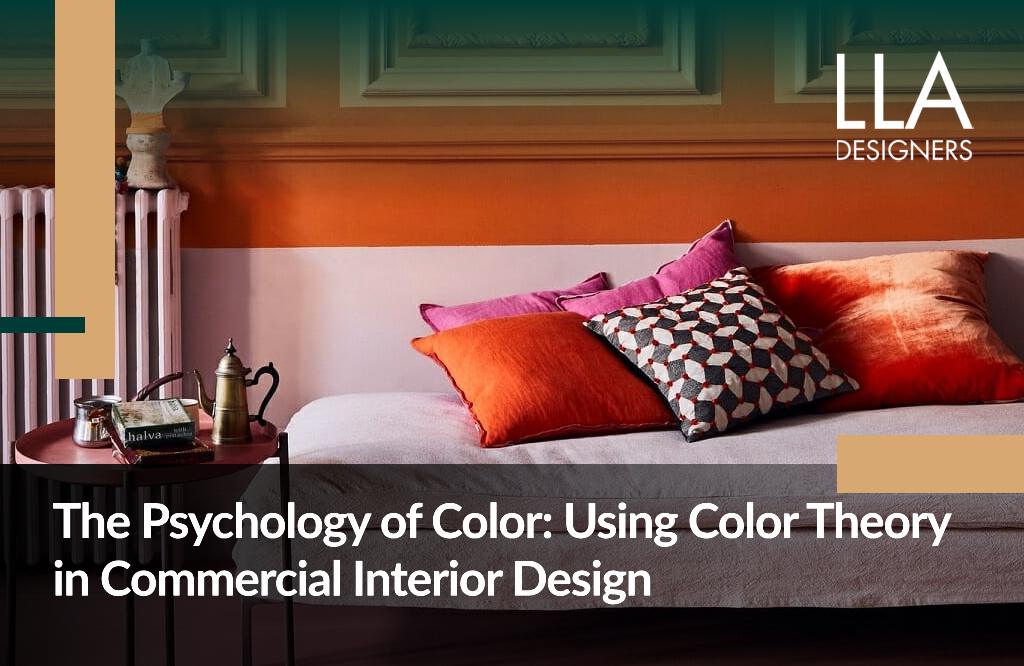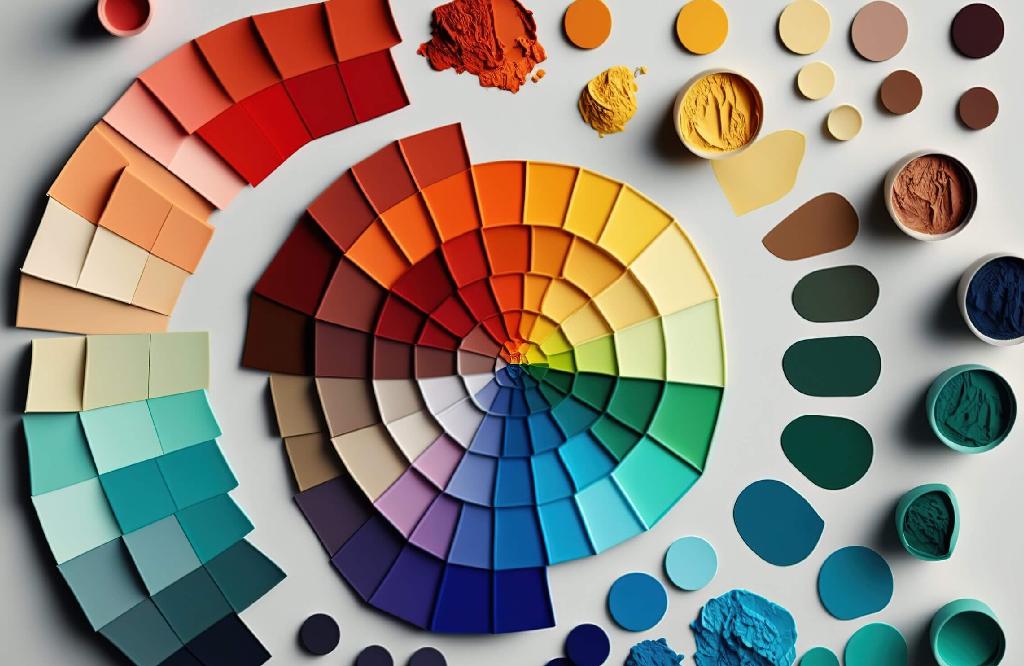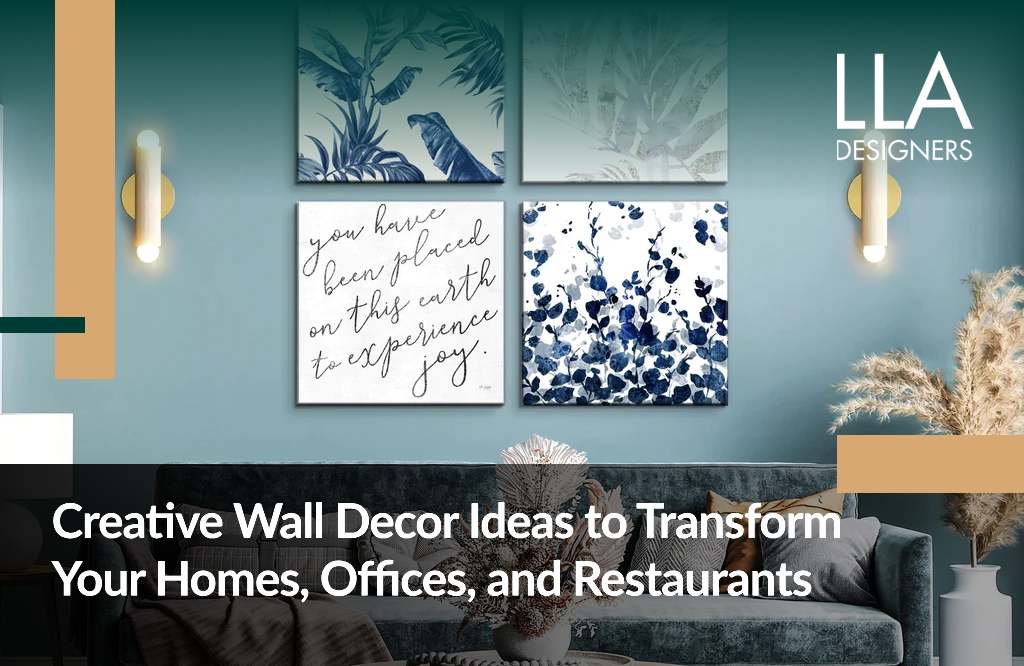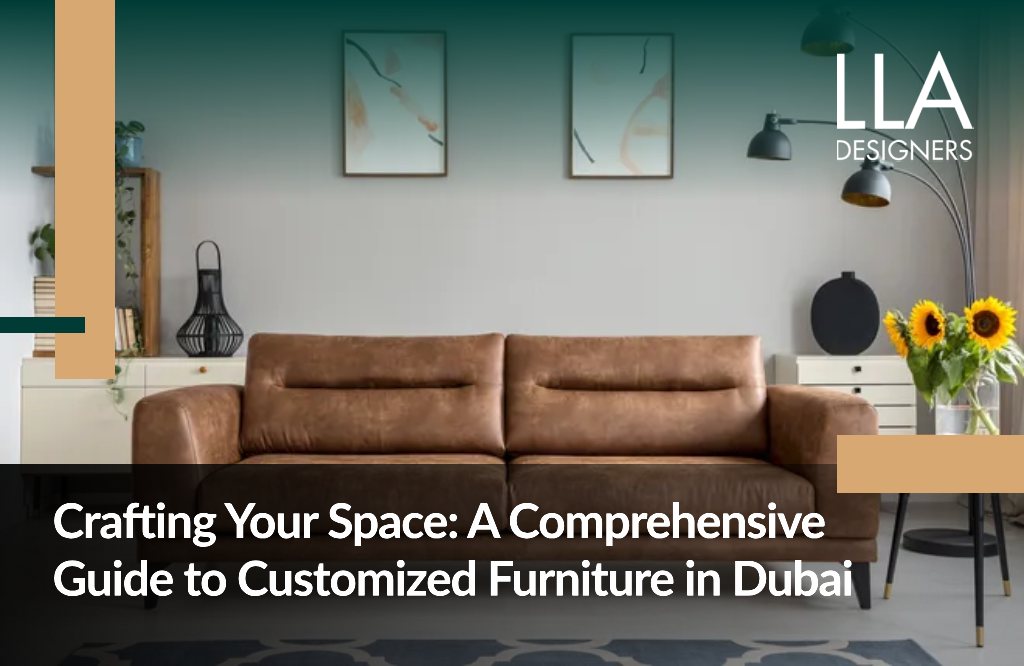Color is way more than a visual experience. It is a psychological one that can significantly affect mood and emotion when commercial interior design is implemented. Understanding the psychology of color can be a powerful tool to create environments that reflect a brand’s ethos and influence customer behavior.
In this article we will delves into the principles of color theory and its practical applications in commercial spaces. Moreover, we are going to unravel and discover different sub-subjects. For example, the variety of colors and how to implement it in Dubai or the UAE in general.
Understanding Color Theory: Basics and Principles
The use of color theory in designing is crucial. It offers the ways in which colors work together and the kind of mood they can create. In essence, the concept of color theory revolves around the color wheel and the interconnection between different colors. Moreover, the primary colors (red, blue and yellow) can mix to form the secondary colors (orange, green, and violet). Furthermore, the latter can come into mixing to create tertiary colors. This wheel serves as a blueprint for designing color schemes and understanding color harmony.
Color psychology is the concept branch which holds the view that color is used to evoke a certain ambiance and feeling. Tints are picked out as the means of eliciting a special reaction in individuals and building a specific atmosphere. The color theory research had identified that every color is defined by an emotion and also takes into consideration various factors. Such as, tint, saturation, and tone.
Color psychology is an old field of research that dates back to centuries. A color is an actualization of what the brain and sight take as different frequencies of light. This spectrum ranges from bluish and purplish on the short end of the wave (blue or purple) to reddish on the long end (reds). In other words, it is what is usually understood as a ‘rainbow’ of color.
The science of color began to develop rapidly as a result of the experiments of Isaac Newton in the 17th century. Which gave rise to the first color wheel, and finally of Wilhelm von Goethe, who published the book “Theory of Colors” in 1810. This was one of the earliest color-related research works.
Moreover, this was the first time someone tried to explore psychologically the impact of colors on emotion of human beings. Nowadays, we can easily implement this into commercial interior design.
The Impact of Color on Emotions, Mood, and Behavior
Color psychology is the science that explores the impact of color on human behavior and on feelings and emotions.
- It has been scientifically proven that colors can cause certain feelings;
- for instance, blue has a common association with tranquility and motto,
- and on the other hand, red can be connected with passion and acuteness.
The sense of sight, smell, sound, and touch are key things that make every marketer focus on them in commercial spaces.
Color theory does not only confine itself to commercial interior design, as it can be seen in other existing fields. It can stand in for fine arts like painting and photography, advertising and branding, fashion and beauty as well as for industrial design and many other areas. It can even be seen to significant in the wide-ranging cultural trends—think of the dreary olives, grays, and neutrals of 1950s wartime fashions that were replaced by bright pastels in the decades of prosperity, or the flamboyant neon colors that were seen in the psychedelic ‘60s.
Though we spend lots of time at home, nowhere is ambiance more important than the color scheme we choose for our home. In fact, the interior design’s color meaning directly relates to our everyday mood and lifestyle. In addition, it affects those who visit our home; the place may be a haven or an unpleasant messy location. How does your house express your unique style? To some of it, we owe a color.
Choosing the Right Colors for Commercial Spaces
The selection process for colors in a commercial setting is a deliberate one. It requires an understanding of the psychological effects of colors, as well as consideration of the brand identity, the purpose of the space, and the people who will use it. The right color choices can enhance the functionality of a space, influence the behavior of its occupants, and align with the brand’s message.
However, the top interior design companies in Dubai will surely know how to guide you through this.
Redefining Spaces with Warm Colors: Energizing and Stimulating Effects
Warm colors, for example, orange, yellow and red are known for their purpose to boost-up and give energy. They can create an atmosphere of excitement and activity, making them ideal for spaces designed to foster interaction and creativity, such as collaborative workspaces and retail environments.
- Red
Red, the most intense warm color, grabs attention. It raises a room’s energy level. It is a good choice for dining rooms and kitchens. Red stimulates conversation and appetite. However, it may not suit bedrooms where calm is preferable.
- Orange
Orange mixes up the strength of red and the merriness of yellow. It is friendly and welcoming. It suits family rooms and living spaces. Orange encourages interaction and can boost creativity.
- Yellow
Yellow captures the joy of sunshine. It communicates happiness. In halls, entries, and small spaces, yellow can feel expansive and welcoming. But in larger doses, yellow may create feelings of frustration and anger.
Warm colors work well in northern light. They counteract the cool and shadowy light. In southern light, they can feel too intense, especially during summer.
While transitioning between spaces, consider the mood you want to create. Use warm colors to energize and stimulate. Use them with purpose. They can redefine a space and create a vibrant, inviting atmosphere.
Creating Balance with Cool Colors: Calming and Relaxing Environments
Conversely, cool colors like blue, green, and purple tend to have a calming effect. That is why they frequently use them in environments where concentration and relaxation are desired. These colors are suitable for healthcare settings, spas, and areas that meant for work that requires focusing. The best creative office interior design ideas contemplate this.
Colors wield a subtle power, shaping our environment’s mood and our emotional responses. Cool colors, in particular, invite tranquility into spaces, promoting a sense of peace and relaxation.
- Blue
People usually drive slowly looking of respect and peacefulness. As the sky matches the vivid blue of the deep sea. Lighter hues of blues can evoke a trip where “the air seems to start over” and became “crisp and refreshing”, while on the other hand, it is could be to the ocean’s depth and mystery. It is as if you see the egg of a robin in a soft blue and the navy of the night skies all around.
- Green:
This color, according to this, symbolizes an emergent growth and a renewal, the image that brings to mind lush green foliage and nature, respectively. To me, for instance, the lighter verdrients transfer to the appearance of new leaves in spring, while the darker greens are just part of the persevere of an evergreen wood. Imagine the fresh hue of a mint leaf or the deep green hue of pine branches evergreen trees.
- Purple:
Conveying exclusive and creative meanings, purple color can be from the dainty lavender fields to the royal plum that represents nobility. Soft pale pink can appear pretty and charming, while deeper shades might look gloomier and more complex. Imagine the sensuality of lilac flowers, which are portraited with their gentle pink shade, or the intriguing purple of a rainy dusk.
Accentuating with Neutral Colors: Versatility and Sophistication
Neutral colors, including black, white, gray, and beige, offer a sophisticated and versatile backdrop for commercial interiors. They can come into use in order to create a minimalist aesthetic or to allow more vibrant colors to stand out. Moreover, neutrals are often employed in spaces that require a timeless and elegant look.
- Beige: The Warm Embrace
Beige may be the closest sensation to explain what is warm and the cozy. This hue oozes warmth and is the perfect color for your walls to make you home feel inviting and cozy. Beige is a shooter that has a chameleon-like trait, reflecting and taking in the color which surrounds it. Therefore, it matches well with things around it to be harmonious in design.
- Taupe: The Elegant Middle Ground
Taupe is an exceptional combination of brown and gray, with an often warm albeit coolish shifts. The fact that it is a neutral shade and blends well with everything gives it a perfect justification for incorporating a balanced and well decorated area.
- Grey: The Sophisticated Neutral
There is no color which screams class and sophistication than grey. Especially when it comes to neutrals color palette. It could be very subtle, from paler, airy to more intense, moody shades. Gray may be used as an element of the contemporary and minimalist designs. This creates a neutral backdrop that lets the architectural design and furniture to stick out.
- Cream: The Soft Touch
Cream is a soft, pale shade that brings a gentle warmth to interiors. It is an ideal neutral for creating a serene and calming atmosphere. Cream pairs beautifully with natural materials like wood and stone, enhancing their textures and adding depth to the overall design.
The Most Definitive Neutral Colors
- Brown: The Earthy Foundation
Brown is a color which is an anchor for you. Because it can remind someone of the earth and nature. Furthermore, it is a stability factor and offers the area much needed support. The lighter browns, e.g., tan, give an easygoing and relaxing air, whereas darker tones, like black, have more formal and refined feeling.
- Black and White: The Classic Duo
Black and white are the most definitive of the neutral colors. They create a dramatic contrast that is timeless and chic. Black adds depth and sophistication, while white offers a clean, crisp canvas. Together, they form a classic color scheme that never goes out of style.
Implementing Effective Color Schemes in Commercial Interiors
Actualizing a good color scheme for a commercial room is not only about selecting colors that look nice, but also it is about more. It includes the visual aspect of colors with a psychological effect, as well as considerations in terms of the lighting, bespoke furniture, and materials used, and the way the colors interact with each other.
Case Studies and Examples of Successful Color Applications
Exploring application cases of color theory in commercial interior design could be a helpful tool in understanding how to grasp it in real practice. Whether it is to convey a certain feeling or create a more functional space, these examples give us ideas on how color can be employed in a way that is most useful to us.
Firstly, consider the vibrant Google offices. Here, color fosters creativity and collaboration. Each room features a different color scheme, reflecting the company’s dynamic culture. The use of bold reds, blues, and greens stimulates energy and innovation.
- Dropbox
Secondly, the Dropbox headquarters showcases a more subdued palette. Soft blues and greens evoke calmness and focus. This choice supports the company’s emphasis on concentration and tranquility in the workspace.
- Starbucks Coffee
Furthermore, we also have Starbucks. This company employs color strategically across its global cafes. Warm browns and greens mirror the brand’s commitment to comfort and sustainability. These colors also enhance the customer experience, making the space feel cozy and welcoming.
- Bank of America
Moreover, the Bank of America Tower in New York uses color to promote environmental consciousness. The building’s green glass facade symbolizes eco-friendliness, aligning with the company’s sustainable practices.
Practical Considerations for Integrating Color Theory into Design Projects
When integrating color theory into commercial interior design projects, practical considerations must be taken into account. These include the durability and maintenance of colored surfaces, the cost implications of different materials and finishes, and the availability of colors in desired materials.
- At first, assess the purpose of the space. Different colors evoke various emotions. For example, blue can induce calmness, while red may energize. Choose colors that align with the intended use of the area.
- Secondly, always consider the lighting design. It dramatically affects how colors appear. Natural light brings out the truest color, while artificial light can alter perceptions. Test color samples in the space’s lighting before finalizing the palette.
- Additionally, remember color consistency all the time. This ensures a cohesive brand image in commercial interior design. Use the company’s brand colors strategically throughout the space. This repetition can reinforce brand identity.
- Lastly, factor in trends with caution. Trends come and go. However, the chosen color scheme should remain relevant and appealing over time. Therefore, try opting for timeless hues that complement the brand rather than fleeting trends that will pass.
Conclusion
In conclusion, the application of color theory in commercial interior design is a powerful tool for shaping the experiences of those who use the space. Moreover, commercial interior design in UAE is particularly well known worldwide. If you wonder why, you can just give a quick look at how every landmark of this country screams art, culture and sophistication.
With a thoughtful approach to the psychological effects of colors, and by making informed selections, designers can create beautiful spaces. Ones that are not only visually stunning but also support the purpose of the area, and correctly reflects the brand’s identity.
Colors in commercial interior design Dubai can be more than mere places of transaction or work. They can be bona fide, experience-enhancing environments that help boost health and productivity. Moreover, we are a professional team with the best interior designers and assessors to help you with your project.
However, if you need further information on this topic or any other, do not hesitate on contacting us anytime. We will be thrilled to give you a helping hand.








